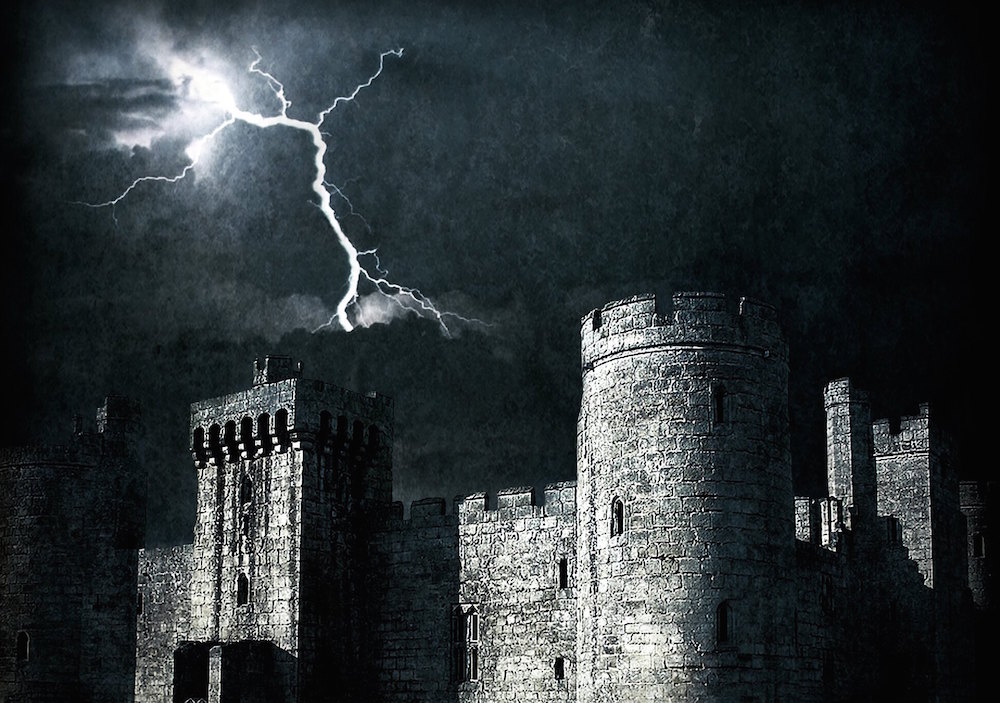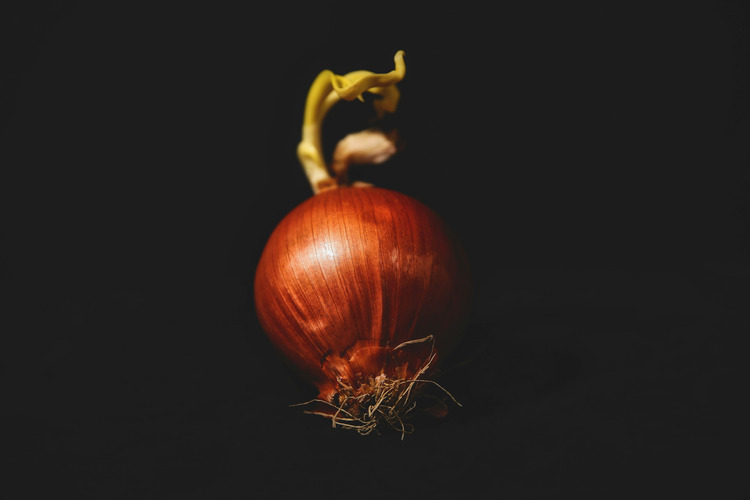Books & Culture
Bringing the Baby Back to Life
Reading Frankenstein as a grieving mother

Losing someone you love means learning how to love an absence, to make shape out of nothing. When the person you love isn’t someone who lived a whole life—when they didn’t grow up, didn’t have friends or a job, didn’t do anything to leave a full imprint on the world—then the work of mourning is made more difficult, more lonely. This is death out of order, and so it also strikes fear into our collective hearts, makes us cower.
My second child, a daughter named Pearl, never made it outside my body. She never took a breath. Technically, then, the world insists that she never existed, whispers softly that it might be better to forget. But I know different. The work of mourning her is a little bit like blowing smoke into the wind—she was right there, but I’m the only one who can see her, unless I find just the right angle, just the right words.
When Mary Shelley wrote Frankenstein in 1816, she was eighteen years old, on a holiday with her lover and a few of their friends. The famous story of how this famous novel came to be is that Mary and the poet Percy Shelley, who she would marry later that year, were staying at a house in Geneva for the summer, with Lord Byron and Mary’s stepsister Claire. One night while reading ghost stories aloud to each other, they decided on a challenge—each of them would write a scary story, and the best scary story would win. Mary, with her tale of a monster brought to life, was the winner.
I don’t know how old I was when I learned the origin story of Frankenstein, but I know it intrigued me. I was a young girl who loved writing, and I’d always been drawn to the monstrous and strange. It wasn’t until much later that I learned Mary Shelley was more than just a carefree teenager that summer. I can still picture her the way I first imagined her—laughing and lovely, drinking and eating with friends, playing house with her still-married lover, casually penning a masterpiece—but she was also a grieving mother, mourning the loss of a dead infant. More than 200 years ago, across a vast ocean and visible only in old black and white photographs, sometimes we stumble upon recognizable loss. In January of that year, she had given birth to her first child, a daughter named Clara. The baby was born early, and died a few weeks after her birth.
When I first learned about Mary Shelley, I was drawn to her youth and precociousness. Now a grieving mother, I find a grieving mother.
When I first learned about the author of the famous Frankenstein, I was drawn to her youth and precociousness. Now a grieving mother, I find a grieving mother. Reencountering Frankenstein’s monster, after my own loss, and after knowing more about the author’s life, I couldn’t help but think of a different kind of creature, one Mary Shelley would have been thinking about constantly that summer. Little Clara, small and pink and helpless, lying in a crib next to Mary.
A few weeks after Clara died, Shelley wrote in her journal: “Dream that my little baby came to life again—that it had only been cold and that we rubbed it by the fire and it lived—I awake and find no baby—I think about the little thing all day.”
What I wanted most in the early days was a time machine. I would travel back to a few days earlier, when everything had been fine, and I would beg them to take the baby from me now, while she was still alive and couldn’t get tangled in her umbilical cord. If we had known, we could have saved her. The intensity of this desire, and the impossibility of it, makes me feel monstrous. I remember once, in great detail, imagining all of the ways I would let them open my body in order to take her out, if only it would allow her to live. I would defy gravity and time, I would undergo any horrors that would save her and leave my family whole.
The death of a baby forces us to reckon with the meaning of mortality itself. Nothing quite like a tiny body, silent and still, to shake the world from its axis. If we don’t even get to grow up and grow old, then why are we here? What’s the purpose of all this heartbreak? Someone once told me that life and death are always on the line, with every birth. The only difference between me and the rest of the world is that I would now always be aware of this truth.
Mary Shelley’s own life started with maternal heartbreak, with the death of her mother, the famous writer and scholar Mary Wollstonecraft, just a few days after she was born. Bookends of unimaginable grief, eighteen years apart: her mother, her daughter.
The title character in Frankenstein is a scientist, and he spends a great deal of time in the beginning of the novel ruminating on the meaning of life and death, describing his efforts to discover the meaning of life so that he might be able to create it anew. Notably, this search for life leads him into the very darkest of places. He doesn’t go to gardens where plants are bursting forth or to springs where water bubbles up clean from the earth—he goes to the slaughter-houses, the charnel-houses, the graves. “I collected bones,” he says, “and disturbed, with profane fingers, the tremendous secrets of the human frame.” We are treated to pages of Shelley’s lush prose about the study of decomposition and death, sections both gorgeous and gross. This is not prayer and rainbows and the power of hope. This is mortality in all its messiness, as Frankenstein tells us, “with unrelaxed and breathless eagerness, I pursued nature to her hiding-places.”
Frankenstein is a tale told securely in the land of the flesh, in all its mortal, decomposing glory.
I can’t know whether Shelley’s focus on wrenching life from death was based on her own loss, but I know my own experience left me with the intense desire to control the universe in that particular way, to harness the kind of magic that could restore the rhythm of a beating heart. No matter the difficulty, no matter the cost. That summer in Geneva with her friends, no doubt still heavy with grief, Mary Shelley began writing Frankenstein. By the time she was finished writing it, she was pregnant again, so she was literally creating life within her body as she was making shape of the work, breathing life into Frankenstein and his monster, imagining the aftermath of his momentous creation. Note that there are no sterile metal robots here; this is all flesh and brittle bones. We aren’t detached from any of it, not in the story, and not on the page. Frankenstein is a tale told securely in the land of the flesh, in all its mortal, decomposing glory.
Finally, after much intense study and work, Frankenstein succeeds. He discovers the secret of life, and collects all the necessary ingredients for his new being. One rainy midnight in his lab, the grand experiment is commenced and one of the creature’s eyes opens, he begins to move. But somehow even after all that deliberation and all that labor, it is too soon, too thoughtless—just a collection of dead body parts collected and sewn messily together. Too close to a human frame to be that far. It is what Frankenstein had most wanted and worked for, and it is also terrible. He immediately abandons his creation in horror: “…Now that I had finished, the beauty of the dream vanished, and breathless horror and disgust filled my heart.”
Frankenstein is a novel thick with loss, but the primary loss at the center is not the creator’s grief for his progeny. Immediately after the creature is born we are reminded that Frankenstein is no mother—he is repulsed and runs away. Luckily, the author herself is much kinder to the creature, and as the novel shifts to his point of view, we’re able to witness the growth of his consciousness, as he begins to understand the world around him and his place in it. Of course, this awakening is only to end in great tragedy, as he realizes his own monstrosity. He begs Frankenstein to make another like him, to make him a mate so that he can have someone to love, who won’t be terrified by his face—but Frankenstein, after briefly considering the idea, refuses in disgust. In this story, the creature is the one who is filled with loss, and who continues to seek his creator. Although in his grief and horror he does monstrous things, Shelley has also shown us his heart, so we can be more horrified for knowing that all the monster ever truly wanted was a quiet life and someone to smile at him when he came home.
It is our first, and perhaps our most deeply-felt desire—bring them back.
Shelley never wrote directly about her loss, outside of the spare lines in her journals, and Frankenstein is too rich and deep a novel to be distilled down to one piece of real-life inspiration. But I do see many echoes throughout, and the novel becomes both sadder and more powerful when I read it with this lens. Frankenstein himself voices the ultimate possible implication of his work, during the long section as he toils toward it, “I thought, that if I could bestow animation upon lifeless matter, I might in process of time…renew life where death had apparently devoted the body to corruption.” It is our first, and perhaps our most deeply-felt desire—bring them back.
Before losing Pearl, I wasn’t interested in writing non-fiction. Purely fiction for me, the more distant from my own reality the better. And then she died, leaving in her wake this lifetime of empty space, and I wanted to tell everyone about her. I took a biography class and became obsessed with the idea of writing a biography about her, about a life that only existed inside the confines of my body. As writers, we are always breathing life into something. Sometimes a flight of fancy, sometimes a real creature we held close and had to let go. My daughter populates my work in ways she’ll never populate the world. She’s there in my non-fiction, essays that explore my loss directly, and in fiction, too, in babies lost and stolen, in women who know what it’s like to live with this particular kind of emptiness. I write Pearl into my work for the same reason I say her name—because it’s the only way she lives.
There’s an intense connection between Frankenstein and his monster. Although they don’t have a familial relationship, and Frankenstein doesn’t care about the monster at all, they are bound to one another forever, tangled as only the the creator and created can be, which is to say: eternally. After everything falls apart, after Frankenstein’s monster in his rage has killed the people Frankenstein loved most in the world, after all of their collective heartache and grief, it isn’t until after Frankenstein has finally died that the monster is free to die himself. As he contemplates his own death, and the freedom from pain that will come with it, he makes note of their connection: “He is dead who called me into being; and when I shall be no more, the very remembrance of us both will speedily vanish.”
Not so, of course. Although in Shelley’s story the bond between them may have held them both on earth longer than they may otherwise have stayed, neither of them vanishes with death. Their story lives on, and so therefore, do they. We exist until we’re forgotten. We hold on to the dead and tell their stories so that they’ll never leave us. Pearl won’t truly die until the stories about her are gone, until no one remembers.
In her journal, Shelley wrote “This is foolish, I suppose; yet, whenever I am left alone to my own thoughts, and do not read to divert them, they always come back to the same point—that I was a mother, and am so no longer.”
But of course, she was a mother. It changed her forever. It ran rich and deep and painful through her art.








